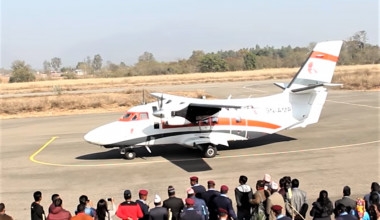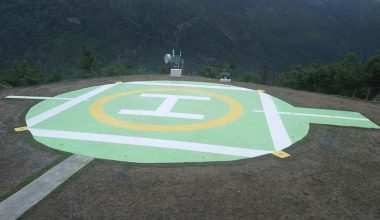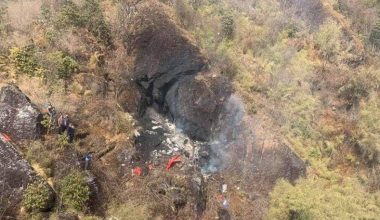Single Engine Airliner now can fly passengers again
May 16, 2016 – The Single Engine aircraft operating in the rural Karnali and Bajura sectors making Surkhet and Nepalgunj their hub of operation, held after the recent crash of Air Kasthamandap single engine aircraft unfortunately killing the crew, are permitted again to resume their operation for flying passengers through chartered flights.
The airliner companies had filed a case in Supreme Court against the contemporary decision of Foreign Ministry to place a permanent ban on single engine aircraft passengers operation on 19 April for which the jury of court has issued a stay order today. Supreme Court has issued a stay order against the decision made by the minister of Tourism and Civil Aviation to prohibit single engine operator to operate passenger Charter Service.
Tourism Minister Aananda Prashad Pokhrel under the direction of Prime Minister K.P. Woli had decided to put ban on the aircrafts on 05 April and made another announcement to continue the permanent ban on 08 April. The airliners companies called out to the Supreme Court against this decision of the government. Two airlines Goma Air and Makalu Air had filed the case that are flying single engine aircrafts in Nepal.
The Managing Director of Goma Air Manoj Karki told that the respected court had places a stay order against the decision of ban of the council of ministers and they will very soon start the chartered flights of the passengers to Bajura, Humla of Karnali, Jumla, Dolpa and Mugu from Nepalgunj and Surkhet as their hubs. The companies also claim that the approval letter and the Air Operator Certificate (AOC) of the aircrafts also illustrate the approval provided to the airliners to conduct the passenger chartered flights. An advocate from the side of the companies presented the business plan that the airliners made with government under the basis of which those companies were providing serviced to the most inaccessible parts of the country. Five aircrafts of 3 companies are flying single engine aircrafts providing their services to the mid and far western regions of the Nepal only.
After the crash of the Air Kasthamndap’s Pac XSTOL single engine airplane on Kalikot on 26 Feb the Foreign Ministry immediately imposed stoppage in any buying process of the single engine aircraft and prohibited the 5 other single engine aircraft to charter passenger flights thereafter the incident.
Single Engine Airplane operating companies flew those airplanes under the premises of permission they got from Approval Letter of Ministry and AOC letter from Civil Aviation which clearly mentions the approval of doing Chartered and Cargo Flights. Only because of this approval they processed loan of Millions of Nepali Rupees from banks and other financial institutions and let their aircraft fly on the most rural places of Nepal, said Mr. Karki.
The ban could result 40% decrement in the income of the airlines. Single engine aircraft fly up to 5 times in season from Nepalgunj to Simikot which takes around 50 minutes of time for each flight. An aircraft can make a transaction of 1 million Nepali Rupees per day during season. There is a minimum of 800 Million Nepali Rupees investment in the sector of Single engine operation including all three companies. These aircraft can fly nine passengers for a fare of Rupees Sixteen Thousands Five Hundred two way per passenger in the sector of Simikot in Humla and Nepalgunj. A kilogram of cargo would cost Rupees One Hundred while flying from Surkhet to Humla and Rupees One Hundred and Ten while flying from Nepalgunj. It could carry 450 Kilograms of cargo in one operation.
At present 5 single engine aircrafts, 2 from Goma Air, 2 from Makalu Air and 1 from Air Kasthamandap are operating their commercial cargo and chartered flights from Surkhet and Nepalgunj to destinations like Humla, Dolpa, Jumla, Rara, Bajura. Civil Aviation has not permitted the scheduled flight and also the cargo/passenger flight in 1 operation in these aircraft. They used to carry cargo while flying from Terai, flew passengers while flying back to Terai and flew passengers the both way on chartered flights.
Following the crash of Air Kasthamandap’s Single-Engine airplane P-750 XSTOL with registration 9N-AJB on Feb 26, a contemporary ban was made on the registration and chartered operation of these 5 single engine aircraft. A committee was formed under the joint secretary of Ministry to study the technical aspects of these aircraft and assigned to submit their report within 15 days. The committee visited Surkhet, studied and presented their report to Tourism Minister Mr. Pokhrel on 24 March. But the report was silent on the topic of flying passengers in single engine aircraft.
Single engine airplanes are considered to be the main means of transportation for passengers on countries of high hills like New Zealand and small islands Indonesia whose topography restricts the construction of large airports. These aircraft can take off or land on grass airstrips and paved airstrips easily. In case of the engine failure the plane will not drop from sky but can glide for 4 kilometers for only 1000 feet of altitude from ground. More height from the ground will provide more time for the aircraft to glide and that crucial time can be utilized by pilots to make safe landing on an appropriate place.
Single engine aircraft have served Nepali aviation since the early start of Aviation in Nepal carrying cargo and flying passengers. There are only 5 such aircraft at present. They have already flown for 30 Thousands hours. Among the total 50 crashes in Nepalese Aviation history, 4 were single engine aircraft which caused loss of 11 lives. The last crash of February 26 is only the incident relating engine failure in single engine aircraft.






